Australia is a country and continent located in the Southern Hemisphere, comprising the mainland of the Australian continent, the island of Tasmania, and numerous smaller islands. It is the sixth-largest country in the world by total area. Here are some key points about Australia:
1. Geography: Australia is bordered by the Indian Ocean and the Pacific Ocean, with neighboring countries including Indonesia, Papua New Guinea, East Timor, the Solomon Islands, Vanuatu, and New Zealand. The country is known for its diverse landscapes, including deserts, tropical rainforests, mountain ranges, and coastal regions.
2. Capital: The capital city of Australia is Canberra, located in the Australian Capital Territory (ACT). Canberra was purposefully built as the capital in the early 20th century and is known for its planned layout and national institutions.
3. States and Territories: Australia is divided into six states and two territories. The states are New South Wales, Victoria, Queensland, Western Australia, South Australia, and Tasmania. The territories are the Australian Capital Territory (ACT) and the Northern Territory (NT).
4. Population: Australia has a population of over 25 million people, predominantly concentrated in urban areas along the eastern and southeastern coasts, with major cities including Sydney, Melbourne, Brisbane, Perth, and Adelaide.
5. Government: Australia is a federal parliamentary democracy and a constitutional monarchy. The head of state is the British monarch, represented in Australia by the Governor-General. The head of government is the Prime Minister, who leads the executive branch.
6. Economy: Australia has a mixed-market economy with a strong emphasis on services, mining, agriculture, and manufacturing. It is one of the wealthiest countries in the world with a high standard of living and ranks highly in areas such as education, healthcare, and quality of life.
7. Culture: Australia is known for its multicultural society, shaped by immigration from diverse cultural backgrounds. Indigenous Australian cultures, dating back tens of thousands of years, are an integral part of the country's identity. The country has a rich cultural scene, with contributions to literature, art, music, film, and sports.
Australia is a vast and diverse country known for its stunning natural landscapes, vibrant cities, and unique wildlife. It is often referred to as the "Land Down Under" due to its location in the Southern Hemisphere.
Why is Australia best from tourism point of view?
Australia offers a wide range of attractions and experiences, making it difficult to pinpoint a single "best" aspect. However, here are some highlights of what many people consider to be the best of Australia:
1. Natural Beauty: Australia is renowned for its stunning natural landscapes, including the Great Barrier Reef, the world's largest coral reef system; the Outback, with its vast desert plains and iconic rock formations like Uluru (Ayers Rock); the Daintree Rainforest, one of the oldest tropical rainforests in the world; and the pristine beaches of the Gold Coast and Whitsunday Islands.
2. Wildlife: Australia is home to a unique array of wildlife, including iconic animals such as kangaroos, koalas, wombats, and platypuses. Visitors can experience wildlife encounters in national parks, wildlife sanctuaries, and conservation areas across the country.
3. Outdoor Activities: Australia offers a wide range of outdoor activities for adventure enthusiasts, including surfing at world-famous breaks like Bells Beach and Bondi Beach; hiking in stunning national parks such as the Blue Mountains and Kakadu National Park; snorkeling or diving in the Great Barrier Reef; and exploring the rugged landscapes of the Australian Outback.
4. Cultural Experiences: Australia's rich cultural heritage is reflected in its Indigenous art, music, dance, and storytelling traditions. Visitors can learn about Indigenous culture and history through cultural tours, art galleries, and Aboriginal cultural centers.
5. Food and Wine: Australia is renowned for its diverse culinary scene, with influences from around the world. Visitors can indulge in fresh seafood, gourmet dining, and farm-to-table cuisine in cities like Melbourne, Sydney, and Adelaide. The country is also famous for its wine regions, including the Barossa Valley, Margaret River, and Hunter Valley, where visitors can enjoy wine tastings and vineyard tours.
6. Urban Lifestyle: Australia's vibrant cities offer a mix of cosmopolitan culture, arts, entertainment, and shopping. Cities like Sydney, Melbourne, Brisbane, and Perth boast world-class museums, theaters, galleries, restaurants, and nightlife venues.
the "best" of Australia depends on individual preferences and interests, whether it's exploring natural wonders, experiencing wildlife encounters, enjoying outdoor adventures, immersing in cultural experiences, indulging in gourmet cuisine, or experiencing city life. Australia truly offers something for everyone to enjoy.
Australia is divided into six states and two territories. Here are the states, territories, and their respective capitals:
States:
1. New South Wales (NSW) - Sydney
New South Wales (NSW) is the most populous state in Australia and is located on the southeastern coast of the country. Here are some more details about New South Wales and its capital, Sydney:
1. Sydney: Sydney is the capital city of New South Wales and the largest city in Australia. It is known for its iconic landmarks such as the Sydney Opera House, Sydney Harbour Bridge, and Bondi Beach. Sydney is a major financial, economic, and cultural hub in the Asia-Pacific region.
2. Geography: New South Wales is bordered by Queensland to the north, South Australia to the west, and Victoria to the south. To the east, it is bordered by the Tasman Sea. Sydney is situated on the eastern coast of New South Wales, overlooking the Tasman Sea.
3. Economy: Sydney is the economic center of Australia, with a diverse economy that includes finance, tourism, manufacturing, and services sectors. It is home to the Australian Stock Exchange and numerous multinational corporations. New South Wales as a whole contributes significantly to Australia's GDP.
4. Population: New South Wales has a population of over 8 million people, with Sydney accounting for a significant portion of the population. The state is known for its cultural diversity, with residents from various ethnic backgrounds and nationalities.
5. Government: New South Wales operates under a parliamentary democracy with a bicameral legislature. The state government is responsible for areas such as education, healthcare, transport, and infrastructure. The Premier of New South Wales is the head of government.
6. Attractions: Aside from Sydney's iconic landmarks, New South Wales boasts diverse natural attractions such as the Blue Mountains, Hunter Valley wine region, Byron Bay, and the Snowy Mountains. The state offers a wide range of outdoor activities, including surfing, hiking, and wine tasting.
New South Wales and its capital Sydney are vibrant and dynamic destinations that attract visitors from around the world for their natural beauty, cultural attractions, and economic opportunities.
2. Victoria (VIC)- Melbourne
Victoria is a southeastern state of Australia, and its capital city is Melbourne. Here are some more details about Victoria and its capital, Melbourne:
1. Melbourne: Melbourne is the capital city of Victoria and the second most populous city in Australia after Sydney. It is known for its cultural diversity, arts scene, vibrant culinary culture, and architectural landmarks. Melbourne consistently ranks highly in global livability indexes.
2. Geography: Victoria is bordered by New South Wales to the north, South Australia to the west, and the Tasman Sea to the east. Melbourne is situated on the northern coast of Port Phillip Bay, with the Yarra River running through the city.
3. Economy: Melbourne is the economic hub of Victoria and one of the major financial centers in Australia. It has a diverse economy, with significant contributions from sectors such as finance, manufacturing, information technology, education, healthcare, and tourism. Melbourne is also known for its thriving arts and creative industries.
4. Population: Victoria has a population of over 6 million people, with Melbourne being home to the majority of the state's population. The city is known for its multicultural population, with residents from over 200 countries speaking more than 260 languages.
5. Government: Victoria operates under a parliamentary democracy with a bicameral legislature. The state government is responsible for areas such as education, healthcare, transport, and infrastructure. The Premier of Victoria is the head of government.
6. Attractions: Melbourne offers a wide range of attractions, including iconic landmarks such as Federation Square, Flinders Street Station, and the Royal Exhibition Building. The city is renowned for its cultural institutions, including the National Gallery of Victoria, Melbourne Museum, and Melbourne Zoo. Melbourne also hosts major events such as the Australian Open tennis tournament, Melbourne Cup horse race, and Melbourne International Comedy Festival.
7. Surrounding Regions: Victoria is known for its stunning natural landscapes, including the Great Ocean Road, the Grampians National Park, Phillip Island, and the Yarra Valley wine region. These areas offer opportunities for outdoor activities such as hiking, surfing, wine tasting, and wildlife viewing.
Victoria and its capital Melbourne are vibrant and cosmopolitan destinations that offer a unique blend of cultural, culinary, and natural attractions.
3. Queensland (QLD)- Brisbane
Queensland is a state located in the northeast of Australia, and its capital city is Brisbane. Here are some more details about Queensland:
1. Brisbane: Brisbane is the capital city of Queensland and the third most populous city in Australia. It is known for its sunny climate, relaxed lifestyle, and outdoor recreational opportunities. Brisbane is situated on the Brisbane River and is surrounded by diverse natural landscapes.
2. Geography: Queensland is the second-largest state in Australia by area and occupies the northeastern corner of the country. It is bordered by the Northern Territory to the west, South Australia to the southwest, and New South Wales to the south. To the east, Queensland is bordered by the Coral Sea and the Pacific Ocean.
3. Economy: Queensland has a diverse economy with significant contributions from sectors such as tourism, agriculture, mining, construction, and education. The state is known for its natural resources, including coal, natural gas, and minerals. Brisbane is a major business and financial hub in Queensland, with a growing technology and innovation sector.
4. Population: Queensland has a population of over 5 million people, making it the third most populous state in Australia. Brisbane is the most populous city in Queensland and serves as the primary economic and cultural center of the state.
5. Government: Queensland operates under a parliamentary democracy with a unicameral legislature. The state government is responsible for areas such as education, healthcare, transport, and infrastructure. The Premier of Queensland is the head of government.
6. Attractions: Queensland is known for its stunning natural beauty and diverse attractions. The state is home to the Great Barrier Reef, the world's largest coral reef system, which attracts millions of visitors each year for diving, snorkeling, and marine tourism. Queensland also boasts beautiful beaches, tropical rainforests, national parks, and vibrant cities such as the Gold Coast and Cairns.
7. Outdoor Activities: Queensland offers a wide range of outdoor recreational opportunities, including surfing, hiking, bushwalking, camping, sailing, and fishing. The state's warm climate and abundance of natural resources make it an ideal destination for outdoor enthusiasts.
Queensland is a diverse and vibrant state that offers a unique blend of natural beauty, cultural experiences, and outdoor adventures. It is a popular destination for tourists, immigrants, and Australians seeking a high quality of life in a sunny and relaxed environment.
4. Western Australia (WA) - Perth
Western Australia (WA) is the largest state in Australia by land area, covering the entire western third of the country. Here are some more details about Western Australia:
1. Perth: Perth is the capital city of Western Australia and the fourth most populous city in Australia. It is known for its beautiful beaches, sunny climate, and relaxed lifestyle. Perth is situated on the southwestern coast of Western Australia, along the banks of the Swan River.
2. Geography: Western Australia is vast and diverse, encompassing a wide range of landscapes including rugged coastlines, expansive deserts, ancient rock formations, and lush forests. The state is bordered by the Indian Ocean to the west and the Northern Territory and South Australia to the east.
3. Economy: Western Australia has a diverse economy with significant contributions from sectors such as mining, agriculture, tourism, and manufacturing. The state is rich in natural resources, including iron ore, gold, natural gas, and diamonds. Perth serves as the primary economic and commercial hub of Western Australia.
4. Population: Western Australia has a population of over 2.6 million people, with the majority residing in the Perth metropolitan area. The state has a relatively low population density compared to other states in Australia, with vast areas of sparsely populated land.
5. Government: Western Australia operates under a parliamentary democracy with a bicameral legislature. The state government is responsible for areas such as education, healthcare, transport, and infrastructure. The Premier of Western Australia is the head of government.
6. Attractions: Western Australia offers a wide range of attractions and activities for visitors and residents alike. The state is home to iconic landmarks such as the Pinnacles Desert, Wave Rock, the Kimberley region, and the Ningaloo Reef. Perth itself boasts cultural institutions, beautiful parks, and vibrant dining and entertainment precincts.
7. Outdoor Activities: Western Australia is a paradise for outdoor enthusiasts, offering opportunities for activities such as surfing, snorkeling, diving, hiking, camping, and whale watching. The state's pristine natural environment and diverse landscapes make it an ideal destination for adventure seekers.
Western Australia is a vast and diverse state that offers a unique blend of natural beauty, cultural experiences, and outdoor adventures. It is a popular destination for tourists, immigrants, and Australians seeking a high quality of life in a stunning and laid-back environment.
5. South Australia (SA) - Adelaide
South Australia (SA) is a state located in the southern central part of Australia. Here are some more details about South Australia:
1. Adelaide: Adelaide is the capital city of South Australia and the fifth most populous city in Australia. It is known for its wide boulevards, parklands, and cultural institutions. Adelaide is situated on the Adelaide Plains between the Gulf St Vincent and the Mount Lofty Ranges.
2. Geography: South Australia is bordered by Western Australia to the west, the Northern Territory to the north, Queensland to the northeast, New South Wales to the east, and Victoria to the southeast. To the south, it is bordered by the Great Australian Bight. Adelaide is located in the southeastern part of South Australia.
3. Economy: South Australia has a diverse economy with significant contributions from sectors such as manufacturing, agriculture, mining, wine production, and tourism. The state is known for its wine regions, including the Barossa Valley, McLaren Vale, and Clare Valley. Adelaide is a major center for defense industries, education, healthcare, and research.
4. Population: South Australia has a population of over 1.7 million people, with the majority residing in the Greater Adelaide metropolitan area. The state has a relatively low population density compared to other states in Australia, with vast areas of semi-arid and desert land.
5. Government: South Australia operates under a parliamentary democracy with a bicameral legislature. The state government is responsible for areas such as education, healthcare, transport, and infrastructure. The Premier of South Australia is the head of government.
6. Attractions: South Australia offers a wide range of attractions and activities for visitors and residents alike. In addition to its wine regions, the state is known for its stunning natural landscapes, including the Flinders Ranges, Kangaroo Island, and the Eyre Peninsula. Adelaide itself boasts cultural institutions, festivals, and a thriving culinary scene.
7. Outdoor Activities: South Australia is a haven for outdoor enthusiasts, offering opportunities for activities such as hiking, camping, fishing, surfing, and wildlife viewing. The state's diverse natural environment and coastal regions make it an ideal destination for adventure seekers.
South Australia is a diverse and vibrant state that offers a unique blend of natural beauty, cultural experiences, and outdoor adventures. It is a popular destination for tourists, immigrants, and Australians seeking a high quality of life in a relaxed and scenic environment.
6. Tasmania (TAS) - Hobart
Tasmania (TAS) is an island state of Australia located to the south of the mainland. Here are some more details about Tasmania:
1. Hobart: Hobart is the capital city of Tasmania and the second oldest city in Australia after Sydney. It is situated on the southeastern coast of the island at the foot of Mount Wellington. Hobart is known for its historic architecture, cultural institutions, and picturesque waterfront.
2. Geography: Tasmania is separated from the Australian mainland by the Bass Strait and is the smallest state in Australia by land area. The island is characterized by rugged coastlines, pristine wilderness areas, and diverse ecosystems. Tasmania is often referred to as the "Natural State" due to its abundance of natural beauty.
3. Economy: Tasmania has a diverse economy with significant contributions from sectors such as tourism, agriculture, aquaculture, forestry, and manufacturing. The state is known for its high-quality produce, including seafood, fruits, vegetables, and dairy products. Hobart serves as the primary economic and administrative center of Tasmania.
4. Population: Tasmania has a population of over 500,000 people, with the majority residing in the Greater Hobart area. The state has a relatively low population density compared to other states in Australia, with large areas of wilderness and national parks.
5. Government: Tasmania operates under a parliamentary democracy with a bicameral legislature. The state government is responsible for areas such as education, healthcare, transport, and infrastructure. The Premier of Tasmania is the head of government.
6. Attractions: Tasmania offers a wide range of attractions and activities for visitors and residents alike. The state is known for its stunning natural landscapes, including Cradle Mountain-Lake St Clair National Park, Freycinet National Park, and the Tasmanian Wilderness World Heritage Area. Hobart itself boasts cultural institutions, historic sites, and a thriving arts and culinary scene.
7. Outdoor Activities: Tasmania is a paradise for outdoor enthusiasts, offering opportunities for activities such as hiking, bushwalking, camping, fishing, kayaking, and wildlife spotting. The state's diverse ecosystems and pristine wilderness areas make it an ideal destination for nature lovers.
Tasmania is a unique and picturesque state that offers a blend of natural beauty, cultural experiences, and outdoor adventures. It is a popular destination for tourists seeking a tranquil and scenic escape from the mainland hustle and bustle.
Territories:
1. Australian Capital Territory (ACT) - Canberra
2. Northern Territory (NT) - Darwin
These are the states, territories, and their capitals in Australia.










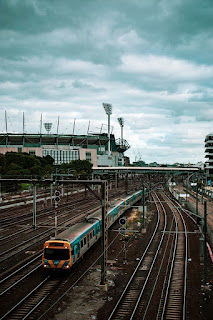
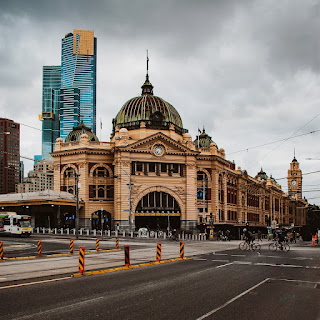




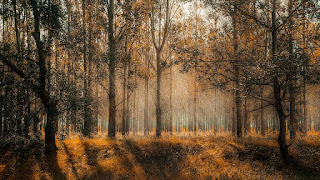





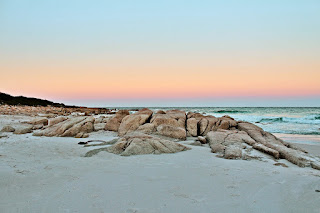
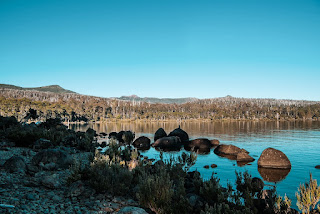
Comments